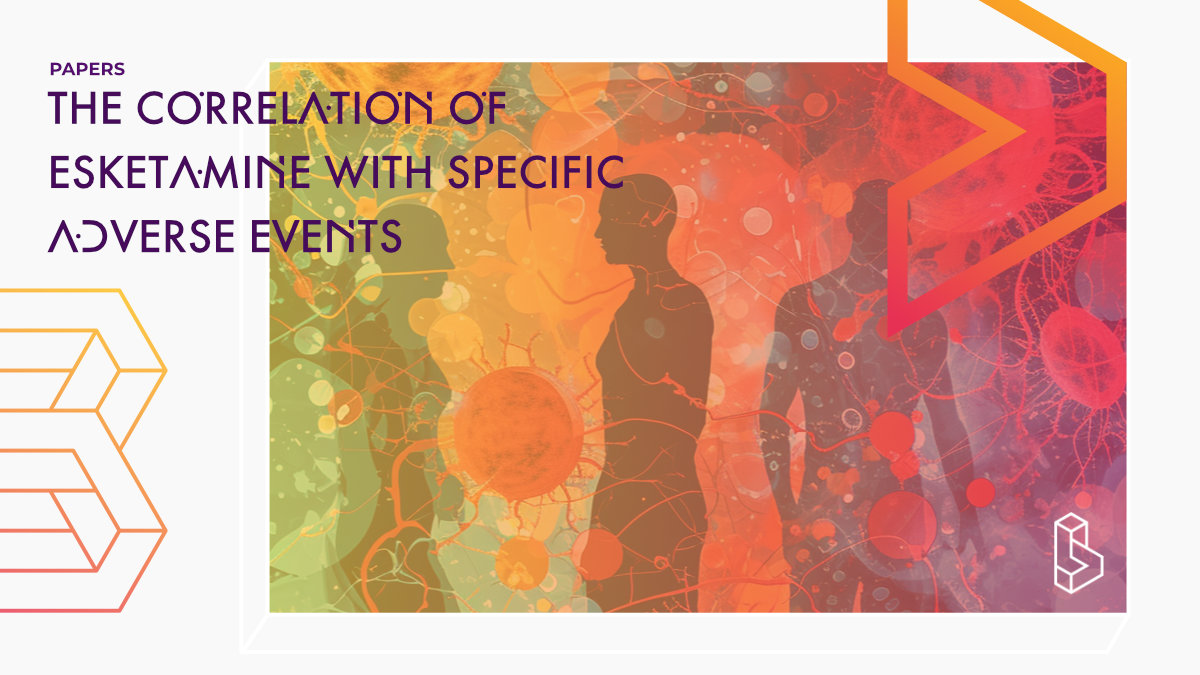This retrospective analysis (n=5061) of FAERS data on esketamine from 2019 to 2023 reveals 117 adverse reactions. In addition to known adverse events, new signals like flashback, tachyphylaxis, and autoscopy were identified. Suicidal ideation and attempts were relatively high, emphasizing the need for vigilance, while issues related to nasal administration, such as monitoring procedure errors and discomfort, were highlighted.
Abstract of The correlation of Esketamine with specific adverse events
“Analyzing the vast data from FAERS database to evaluate the association between Esketamine and specific adverse events to guide clinical practice and regulatory decisions. Data related to Esketamine adverse events from 2019 Q1 to 2023 Q1 were collected from FAERS database. After data standardization, various signal quantification technologies, such as ROR, PRR, BCPNN, and MGPS, were employed to identify and evaluate adverse reaction signals closely related to the use of Esketamine comprehensively. A total of 5061 reports with Esketamine as the primary suspected drug were obtained, identifying 117 adverse reaction terms (PT) involving 27 system organ class (SOC) categories. Apart from the adverse events already mentioned in the drug’s instructions, this study identified some new, clinically valuable potential AE signals, such as Flashback, Tachyphylaxis, and Autoscopy. In addition, high-ranking results included euphoric mood, feeling of relaxation, and feeling drunk. Notably, the occurrence frequencies of suicidal ideation and suicide attempt were relatively high, so clinicians should be particularly vigilant about these potential adverse reactions when using Esketamine. Moreover, since this drug is administered as a nasal spray, issues such as drug monitoring procedure incorrectly performed and nasal discomfort may arise. This study underscores the potential adverse reactions and risks of Esketamine in clinical applications, especially regarding long-term efficacy, addiction risks, and suicidal risks.”
Authors: Ying Jiang, Zhiqiang Du, Yuan Shen, Qin Zhou & Haohao Zhu
Summary of The correlation of Esketamine with specific adverse events
Depressive disorder is a prevalent mental illness in China, with a lifetime prevalence rate of 6.8%. Many patients fail to experience symptom relief after undergoing two or more types of medication treatments.
Since 2000, ketamine, arketamine, and esketamine have emerged as breakthrough directions in depression research. The FDA approved the esketamine nasal spray Spravato in March 2019, for use alongside oral antidepressants, to treat adults with treatment-resistant depression. Esketamine is a non-selective, non-competitive NMDA receptor antagonist that is used to treat depression. It can cause serious side effects, including dissociation, nausea, sedation, vertigo, sensory delay, anxiety, somnolence, increased blood pressure, vomiting, and feeling of intoxication.
Find this paper
The correlation of Esketamine with specific adverse events: a deep dive into the FAERS database
https://doi.org/10.1007/s00406-023-01732-5
Paywall | Google Scholar | Backup | 🕊
Cite this paper (APA)
Jiang, Y., Du, Z., Shen, Y., Zhou, Q., & Zhu, H. (2023). The correlation of Esketamine with specific adverse events: a deep dive into the FAERS database. European Archives of Psychiatry and Clinical Neuroscience, 1-9.

